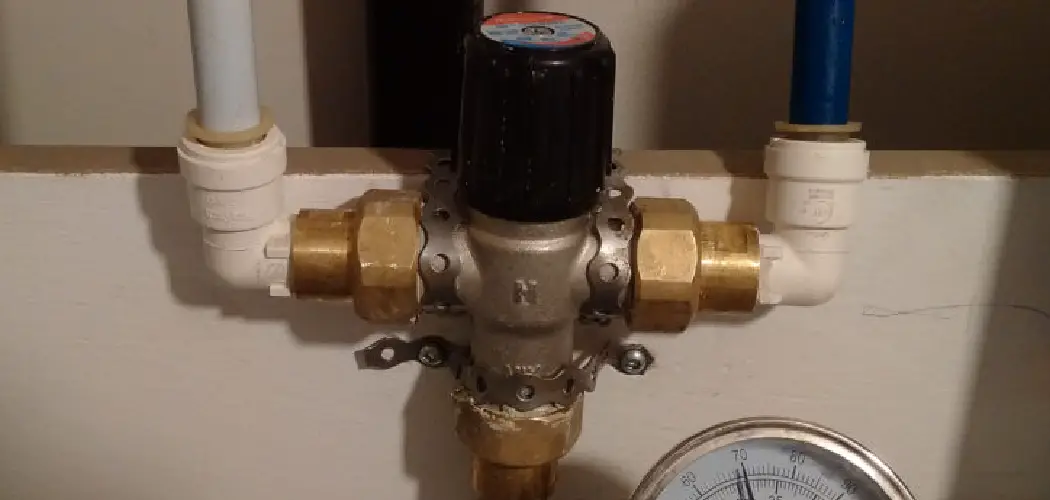Dealing with a leak in a PVC pipe joint can be a frustrating and inconvenient experience, but fear not, as the solution is within your reach. Whether it’s a minor drip or a more significant issue, knowing how to fix a leak in a PVC pipe joint can save you time and money on costly repairs. In this comprehensive guide, we will walk you through the steps to diagnose the problem, choose the right materials, and implement effective repair techniques.
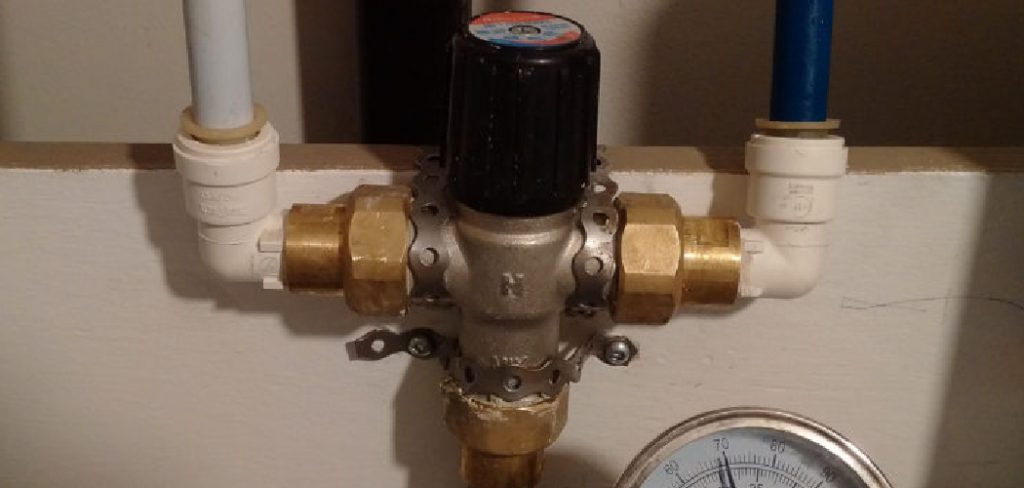
You’ll learn how to fix a leak in PVC pipe joint, select the appropriate sealants and adhesives, and reassemble it to ensure a watertight seal. From common household tools to specialized PVC pipe repair kits, we’ll explore various options available to tackle the issue.
Whether you’re a seasoned DIY enthusiast or a beginner in the world of plumbing, mastering the art of fixing PVC pipe joint leaks is a valuable skill that can keep your plumbing in top shape.
The Significance of Addressing Pvc Pipe Joint Leaks
Leaking pipes can be a nuisance in any household. Not only do they waste water, but they can also cause damage to your property and result in costly repairs. When it comes to PVC pipes, fixing leaks may seem like a daunting task, especially if you have no experience with plumbing. However, neglecting these leaks can lead to even bigger issues down the line.
Addressing PVC pipe joint leaks is crucial for maintaining the integrity of your plumbing system. These joints are where two or more pipes come together and are connected using fittings. They are prone to leaking due to various reasons such as age, wear and tear, improper installation, or excessive pressure on the joint. Regardless of the cause, ignoring these leaks can have severe consequences.
10 Methods How to Fix a Leak in Pvc Pipe Joint
1. Replace the Pipe Joint
One of the simplest ways to fix a leak in a PVC pipe joint is to replace the entire pipe joint. This method is best used when the leak is caused by a damaged or broken pipe joint, as it will ensure that the problem is completely resolved. To replace the pipe joint, you will need to cut out the damaged section of the pipe and then use a new piece of PVC pipe and fittings to replace it.
2. Use Plumber’s Putty
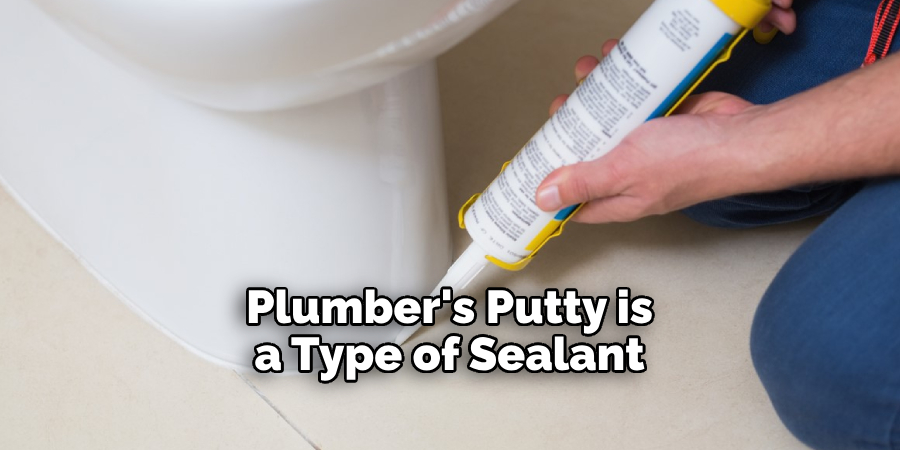
Plumber’s putty is a type of sealant that can be used to fix small leaks in PVC pipes. To use a plumber’s putty, simply apply a small amount around the leaking area and then press firmly until it forms a tight seal. This method is best used for minor leaks and should not be used on larger or more serious leaks.
3. Use Epoxy Resin
Epoxy resin is another type of sealant that can be used to fix leaks in PVC pipes. Unlike plumber’s putty, epoxy resin forms an incredibly strong bond and can be used on larger or more serious leaks. To use epoxy resin, simply mix together equal parts of the two components and then apply it around the leaking area before allowing it to dry completely.
4. Apply Heat
In some cases, applying heat to the leaking area may help to stop or reduce the leak temporarily. To do this, you will need to use either an electric heat gun or a propane torch (depending on what type of PVC you are using) and apply gentle heat until you see signs of melting around the leaky joint. Once melted, remove any excess material before allowing it to cool completely before using it again.
5. Use Tape
Tape can also be used as a temporary solution for fixing small leaks in PVC pipes joints. To do this, simply wrap several layers of electrical tape tightly around the leaking area before pressing firmly into place with your fingers or a flat-head screwdriver until secure. This method should only be used for minor leaks as it will not provide enough protection for larger ones!
6. Use Caulk
Caulk is another type of sealant that can be used for fixing small leaks in PVC pipe joints but should not be used for larger ones due to its lack of strength compared with other types of sealants, such as epoxy resin or plumber’s putty.. To use caulk, simply apply a thin layer around the edges of the leaking area before pressing firmly into place with your fingers or a flat-head screwdriver until secure. Once finished, allow time for drying before using again!
7 . Ream Out The Pipe Joints
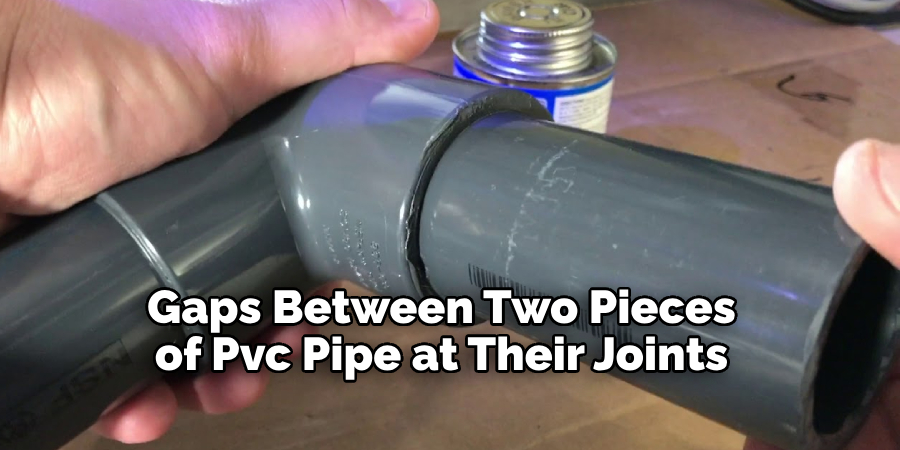
If there are any gaps between two pieces of PVC pipe at their joints, then reaming them out may help reduce or stop any leakage from occurring at those points. To do this, you will need an adjustable reamer that can easily fit inside both pieces of pipe and then slowly turn clockwise while pushing down gently until all gaps have been removed. Once finished, check for any further leakage before continuing with other methods!
8 . Use A Coupling
A coupling is an effective way to join two pieces together without having any gaps between them, which could cause leakage. To do this, you will need two couplings, which should fit snugly over both ends of each piece being joined together. Then simply slide one coupling onto each end, making sure they are securely tightened so no water escapes through!
9 . Apply Adhesive Tape
Applying adhesive tape, such as duct tape, over any areas where there may be potential leakage can help reduce water loss significantly. Start by cleaning off all dirt and debris from both sides being joined together so that tape sticks better than slowly wrapping several layers tightly over both ends, ensuring all gaps are covered. Once finished, check again for any further water loss before continuing with other methods!
10 . Use A Compression Fitting
Using compression fittings is ideal when trying to join two pieces together securely without having any gaps between them, which could lead to potential water loss problems. Start by selecting appropriate size fittings based on diameter measurements taken from both ends being joined, then slide one fitting onto each side, making sure they are securely tightened so no water escapes through! Finally, check again for any further leakage before continuing with other methods!
Things to Consider When Fixing Leak in Pvc Pipe Joint
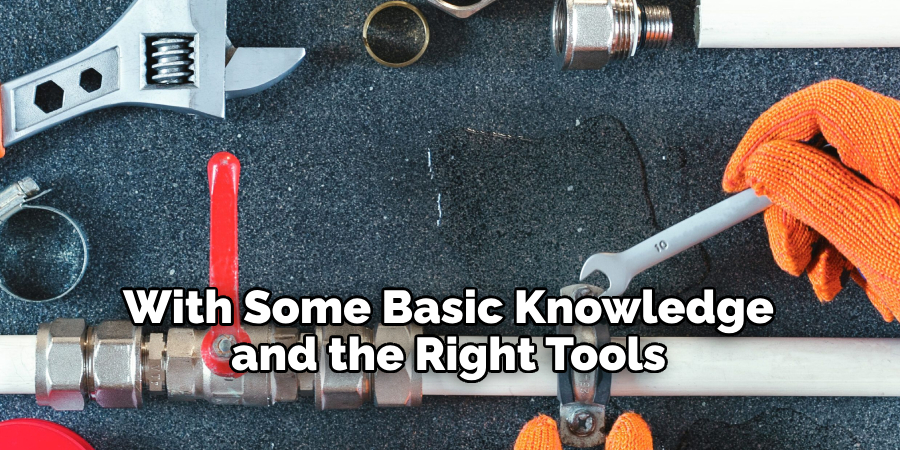
Fixing a leak in a PVC pipe joint can be an intimidating task, especially if you don’t have much experience with plumbing. However, with some basic knowledge and the right tools, you can successfully fix a leak in your PVC pipe joint without having to call a professional plumber.
Before we dive into the steps of fixing a leak in PVC pipe joint, it’s important to consider a few things. These considerations will help ensure that you are properly prepared and equipped to handle the task at hand.
- Identify the source of the leak: The first step in fixing any problem is identifying its source. In this case, you need to locate exactly where the leak is coming from. This will give you a better understanding of what type of repair is needed and how extensive it will be.
- Determine the severity of the leak: Not all leaks are created equal. Some may be minor and can easily be fixed with a simple patch, while others may require more significant repairs. Take into account the size of the leak and how long it has been going on to determine its severity.
- Gather necessary tools and materials: Once you have assessed the source and severity of the leak, gather all the necessary tools and materials for your repair. These may include PVC glue, a hacksaw, sandpaper, and replacement pipe or fittings.
- Safety first: Before handling any tools or starting any repairs, make sure to put on protective gear such as gloves and safety glasses. This will help protect you from any potential injury or harm.
- Turn off the water supply: Before beginning any repairs, it’s crucial to turn off the water supply to the affected area. This will prevent any further damage and make your repair easier.
- Clean the area: It’s important to clean the area around the leak before starting any repairs. This will allow you to see the damaged area more clearly and ensure a better bond when using PVC glue.
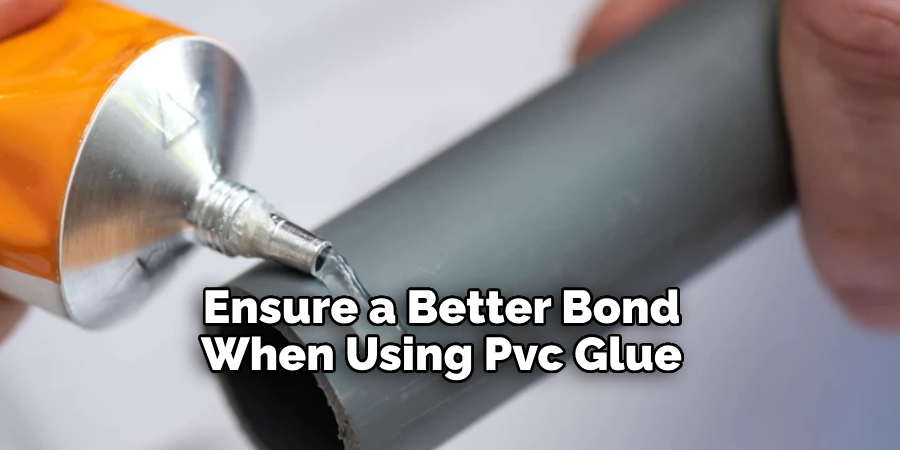
Conclusion
Overall, learning how to fix a leak in pvc pipe joint is an important skill that can help save you both time and money in the future. With the proper materials, some basic guidance, and some patience, anyone should be able to fix their leaking PVC pipe joint and get it back up and running like a charm.
Take heed of these tips and you’ll be able to tackle any plumbing issue that comes your way. So don’t forget: when fixing a leak in PVC pipe joint, buy the appropriate material such as teflon tape or a plunger, shut off the water supply at the valves before tackling any project, wear safety gear for added protection against cuts and debris from bending or cutting.

